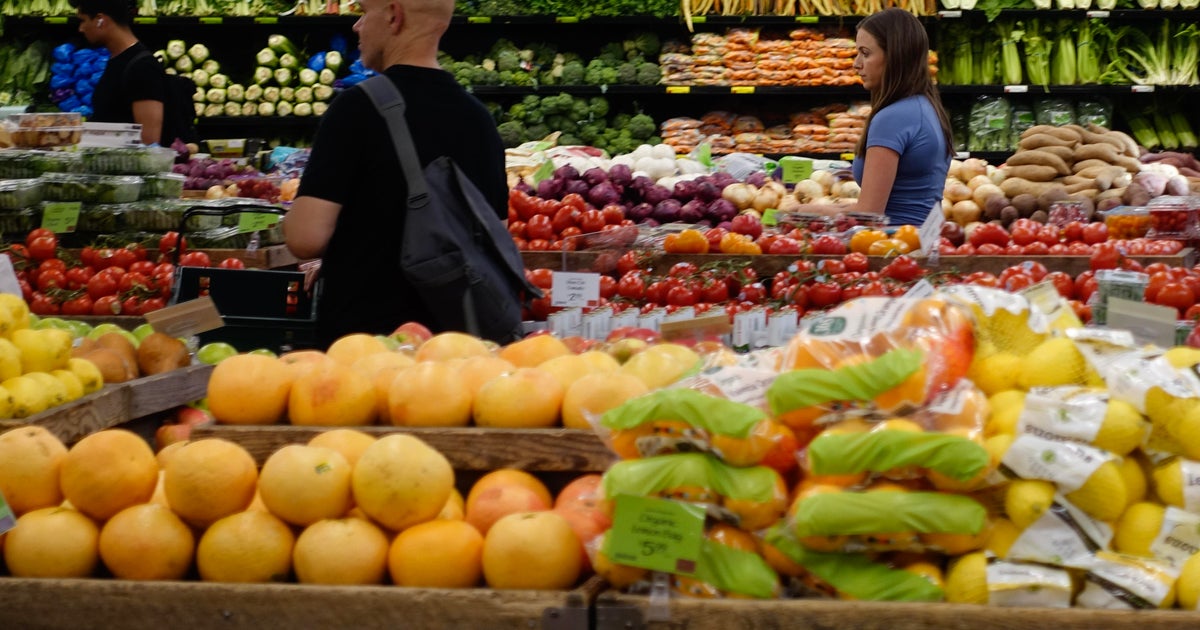Prices are falling, but not for food. Groceries remain a "pain point."
Although inflation has fallen for seven straight months, prices for one item that is a major part of every American's budget continues to rise: the food we eat at home.
Grocery inflation picked up in January, even as overall U.S. prices fell slightly from the previous month, according to federal labor data. Prices for food at home — what people buy at retailers to prepare their own meals — jumped 11.3% in January from a year earlier, the Labor Department said on Tuesday.
Many households continue to feel the pinch, even as the overall inflation rate is slowly receding, thanks to lower costs for items such as used cars and airline fees. Seniors and low-income households are among the most hurt by stubbornly high prices in the grocery aisle. Although Social Security recipients received an 8.7% cost-of-living increase for 2023, the biggest jump since 1981, the bump still lags food costs, while the poor generally spend a greater share of their overall earnings on food.
"Leading pain point"
More seniors are pointing to food costs as an ongoing concern, according to the Senior Citizens League, an advocacy group for older Americans.
"According to our latest survey, 63% rated food costs as the category of spending that increased the fastest in their household," said Mary Johnson, Social Security and Medicare policy analyst at the Senior Citizens League. "This is up from 58% who reported food costs as their fastest-growing category of spending this time a year ago."
She added, "Food was the leading pain point last year as well."
Meanwhile, lower-income families feel the brunt of high grocery price more than higher-earning households because of their spending patterns, according to the New York Federal Reserve Bank.
"Lower-income households experienced above-average inflation because of their higher proportional spending on food and housing," NY Fed economists wrote in a January blog post.
Since December, the bottom 40% of earners have felt the highest year-over-year inflation rate of any income group, they noted. And the pain could grow worse next month, with about 30 million people in 32 states losing enhanced food-stamp benefits due to an expiring pandemic relief program.
Why are grocery prices so high?
High grocery costs stem from a number of issues, including supply-chain snags, the avian flu epidemic that is driving up the cost of eggs, climate issues like drought and the war in Ukraine, which has raised the cost of commodities.
On social media, consumers complain about being "baffled" by food prices, as well as stressed over the challenge of budgeting for ever-higher grocery bills.
There's also another school of thought, particularly popular among left-leaning lawmakers and policy makers: Food producers may be raising costs simply because they can. One corporate watchdog group has accused food manufacturers and retailers of boosting prices unnecessarily because that was more feasible at a time when consumers are braced for inflation.
Whatever the cause, there could be some relief — albeit slight — in sight.
Food prices should increase at a slower pace throughout 2023 compared with 2022, with the U.S. Department of Agriculture forecasting an 8% increase in grocery costs this year.
That would amount to a decline from the 11.8% increase in grocery costs during 2022. But it still means that consumers at the end of 2023 could be paying almost 20% more for the same groceries compared with 2021.



